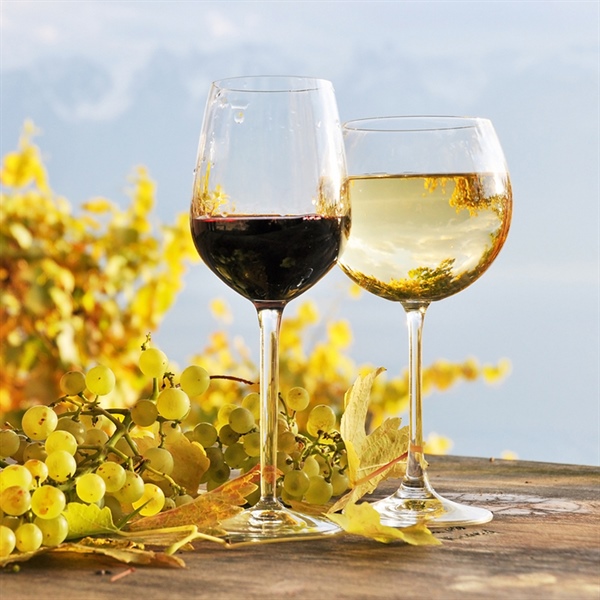By Nan McCreary
Ready for some fun in the sun, be it a picnic at the lake, a trek in the mountains, a day on the beach or a backpacking trip through the woods? If you’re like many of us, you’d like to take along a little vino to quench your thirst during your outing. But do you really want to pack a bottle of wine that you will have to protect from breakage, or take along a favorite corkscrew that may get lost in a labyrinth of pine needles? Here are a few alternative packaging options to consider when headed for the great outdoors.
Cans
Don’t underestimate canned wines. They are increasingly popular, and as that popularity grows, more premium wine producers are getting into the game with quality wines. Experts claim that aluminum cans do not impart a metallic flavor because of the way the cans are lined. And despite myths to the contrary, many say canned wines are nearly indistinguishable from their bottled counterparts.
Today you can find just about any variety and style of wine in a can, including Pinot Grigio, Chardonnay, Rosé, Pinot Noir, Cabernet Sauvignon and both red and white blends. White wines are especially popular because they’re light and refreshing and excellent when served chilled. You can even enjoy mimosas or wine spritzers in a can, as well as sparkling wines. Canned wines typically hold 375ml, which is half a normal wine bottle. With smaller servings, you can try better wines for a lower price. You can also buy 4-packs of 375ml cans, which is equivalent to two bottles of wine, or a 4-pack of 250ml, which equals 1.25 bottles.
Box Wines
Picture a hiker trudging through the woods with a backpack over his or her shoulders. The backpack doesn’t contain water, snacks, or extra gear as you would expect. Rather the backpack is actually a box of wine! Now how convenient is that?
Box wine is just that: Wine in a box. Actually, it’s a bag in a box. The wine is contained in a polyethylene bladder typically fit with an air-tight valve that protrudes from a protective corrugated fiberboard box. Polyethylene is the safest, most non-toxic plastic available, and does not influence the flavor of the wine.
Box wine is rapidly increasingly in popularity, not only because of immense improvement in the quality, but also because it offers so many advantages. Consider that box wine:
· Stays fresher longer. Open box wine can last six to eight weeks, even longer is you keep it in the refrigerator. You don’t need to worry about opening a bottle and feel the need to drink it within a day or two.
· Is economical. There’s no overhead in materials: glass, corks, screw top, foil etc. A typical box wine, which is equivalent to four bottles of wine, is 96% wine, so it’s definitely a better value.
· Has a smaller carbon footprint than traditional glass bottles. Cardboard takes less energy to producer than a bottle, and the box is lighter to ship. You can also recycle the box.
· Is portable. You can put a box in the front seat of your car without worry of spillage, and you can set it down on the sand, knowing it likely won’t tip over. You can even carry it on your back when you’re hiking.
You can find reds and white wines, Rosés, blends and pre-mixed sangrias in boxes. Or, if you’re looking for variety, try a Picpoul from Languedoc in Southern France or a Grüner Veltliner from Austria. The availability of these two wines is a testament to the popularity of boxed wine in Europe, especially in France, Italy and Sweden.
Liquid Cartons
Premium wines in liquid cartons are coming to you, if they’re not already here. While wines in cardboard cartons have been around for quite a while, more top producers are using Tetra Pak technology for easy-to-transport, eco-friendly containers. Boisset, the Burgundy-based producer, offers a line of premium quality wines from sloping vineyards in the South of France packaged in Tetra Paks. The brand, called the French Rabbit, is available in one-liter, 500ml and 4x250ml packaging. Three Thieves Wines uses Tetra Pak packaging for its line of Bandit Wines, which also come in multiple sizes. Bandit wines have been highly praised by wine critics nationwide. Like canned and box wines, wines in liquid cartons offer advantages of portability, space savings, transport efficiency and recyclability. They’re also insulated, so chilled wines stay chilled.
As more and more wine drinkers put a premium on environmental friendliness and convenience, look for an increase in packaging alternatives for your favorite beverage. These include lightweight polyethylene terephthalate (PET) bottles, flat bottles (think space saver) and yes, even paper wine bottles. Also, expect more premium wine makers to enter this market. So, the next time you go shopping at your favorite wine store, just remember, you no longer have to compromise on quality when you’re looking for convenience. After all, not all good wine is sold in glass bottles these days.
For more articles like this and all things wine, visit the Rodeo Uncorked! Facebook group.



